Geography and Physical Characteristics
Egyptian Civilization stretched from southern Turkey to the Nile delta. The environment of Egypt was uniquely favourable to early settlement and the development of a centralized state. The long, narrow valley of the Nile, its rich alluvial soil bounded on each side by the arid desert, beginning either with a gentle slope or with a marked escarpment. One of the distinctive forms of the settled zone of Egypt was that towns and villages were strung out over large distances, comprising loosely connected compounds. This region was divided in two parts: the Nile delta known as Lower Egypt and the long Nile valley known as the Upper Egypt. The Nile valley, a narrow strip of alluvial plain boarded by desert, was one of the richest ecological niches.
Above Cairo, the strip varied from 3km to 22km across, with a sharp division between the desert and the alluvium. North of Cairo extended the delta, 165km to 250km across, lush, well watered and fertile. Egypt was uniquely protected from foreign incursions, with but one route from the Red Sea and another into the Eastern Delta.
Resources
Plentiful supply of soil which, mixed with water into mud, poured into moulds and either sun-dried or kiln-fired, provided bricks for every kind of structure. Kiln-fired bricks were used only for drains, pavements and the facing of certain major buildings. Reeds, papyrus and palm-branch ribs, plastered over with clay, were tractable materials available in the Nile valley. Reed matting was used in between mud-bricks courses in reinforcement. There was a lack of timber for major building work but Egyptians Kings imported cedar wood by ship from Byblos, the ancient port just north of Beirut.
Abundant labour was available for the transportation of stone blocks from quarry to building site, by raft on the Nile and laboriously up ramps from the river bank.
Architectural Elements
and their Building Techniques
True arches were rarely used in early Ancient Egypt. Only when the building material was mud-brick and building corbelled vaults was impractical, were true arches erected. Doorways were generally built with stone lintels. In Zoser’s great mastaba a barrel-vault has been found. It was built with bricks wedged together and bonded from above with gravel and mortar.
Corbels were widely used in stone buildings; and corbelled arches continued to be constructed a long time after the true arch had been invented. They can be found in pyramids and occasionally in temples. The use of corbelled instead of true arches limited the width of the free space underneath, but required less dressing of stones.
In tombs and temples for the dead there were niches for offerings, the back walls of which were given the form of doors. The nourishment that was offered to the dead, could be real food placed on an offering slab or symbolic food carved into a stela. The earlier three dimensional executions of these doors gave way to a simpler painted form during the New Kingdom. False doors were often highly decorated and marked with the names and titles of the grave’s owner.
Stone buildings were often erected on rock surfaces. When foundations had to be laid, the building pit was first filled with water and the resulting horizontal lines were marked on the walls. The water was then removed and the pit filled with sand up to the marks. This was covered with several layers of broken rock on which the rock slabs forming walls and pillars were placed.
At Karnak wall foundations never go deeper than two to three meters. At Luxor close to the river, walls were built on three layers of stone blocks each about 80 cm high and the brick foundations of the colonnades at the Ramesseum were less than two meters thick.
Pavements

Unlike floors in private homes which were never paved in Pharaonic times, temple courtyards and floors were often covered with flagstones. Roads were, apart from a few cases which belonged to temple complexes or where heavy loads were routinely moved along them, made of compacted earth, dried almost as hard as stone by the sun.
Pillars
From simple, barely adorned granite columns, pillars evolved into stone plants: trunks of palm trees and bundles of lotus plants, reeds or papyrus, often used side by side. Pillars were either free-standing or engaged, sometimes they were purely ornamental, never more so than in the case of pillar reliefs carved into walls.
Unlike many modern stairs which are often lightly built of either wood or steel, ancient Egyptian stairs were generally massive affairs made of bricks or, in temples, of rock. As most towns were built in the plain, there was rarely need for wide public stairs. Town houses sometimes had second or third floors, which could be reached by flights of stairs built of mud bricks or wood and the flat roofs of most houses were accessible and often used for sleeping and cooking.
Stela
These are often freestanding upright slabs of stone bearing inscriptions and at times reliefs. They may be commemorative, sometimes they were erected to indicate borders or boundaries.
Mastabas
Ancient Egyptians believed in after life and did their best to build lasting tombs, to preserve the body, and to bury with it the finest commodities that might be needed for the sustenance and eternal enjoyment of the deceased. Such tombs are nowadays known as Mastabas, from their resemblance to the low benches built outside the modern Egyptian house.
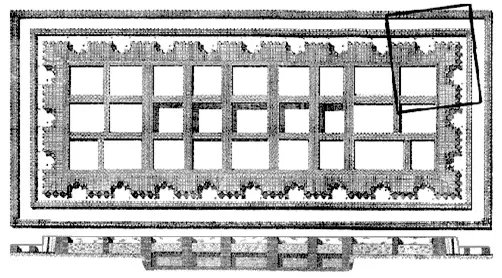
In the First Dynasty, the more elaborate graves took the appearance of large house with several small rooms, a central one containing the sarcophagus (a stone coffin) and others surrounding it to receive the abundant funerary offerings. The whole was constructed in a broad pit below ground, the wooden roof being supported by wooden posts or crude brick pillars, and the entire area covered by a rectangular, flat-topped mound of the soil from the excavation, retained in place by very thick walls. The outer faces were either serrated with alternate buttresses-like projections and narrow recesses – the so called ‘palace façade’ arrangement – or plain, and sloped backwards at an angle of about 75º.
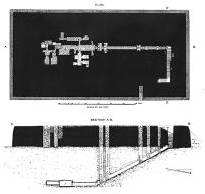
In the Second and Third Dynasties developed the ‘stairway’ mastaba. The tomb chamber with its attendant magazines was sunk much deeper and cut in the rock below. Steps and ramps led from the north end of the top of the mastaba to connect with a shaft which descended to the level of the tomb chamber. There were two well-space recesses on the long side i.e. the front towards the Nile. The southern most of the two recesses was a false door allowing the spirit of the deceased to enter or leave at will, and in front of it was a table for the daily offerings of fresh food.
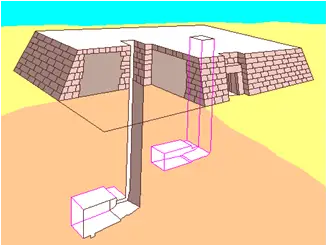
In the Fourth Dynasty a small offering chapel developed, tacked on to the mastaba, or an offering room was constructed within the mastaba itself. Tomb chambers were sunk more deeply still, approached by a short horizontal passage from a vertical shaft sunk from the north end of the top of the superstructure; therefore, these were often called as ‘shaft’ mastabas.
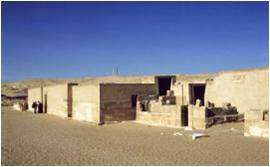
In the Fifth and Sixth Dynasty the offering room or chapel at ground level became increasingly elaborate. There might be a group of rooms, within or adjacent to the mastaba mound, including a columned hall, the walls lined with vividly-coloured reliefs, depicting scenes from the daily life of the deceased.
The Mastabas at Gizeh, mostly of the Fourth and Fifth Dynasties, number two or three hundred, arranged in orderly ranks, and adjoin the famous pyramids there. Fourth Dynasty examples illustrate, on the one hand, the development of the offering chapel, and on the other, the typical ‘shaft’ mastaba with deep underground tomb chambers and a sloping-sided superstructure having two widely spaced recesses on the long east side, the southern one of which served as a false door and for offerings.
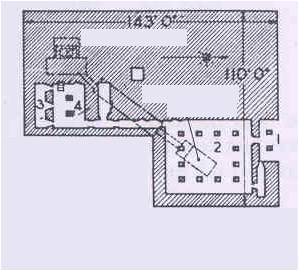
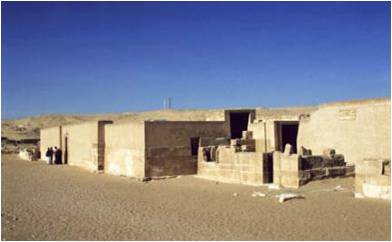
The Mastaba of Thi, Sakkâra, has a large pillared court which is attached to the north end of the east side, approached from the north by a portico which has a serdab (room near the chapel) alongside. A passage connects the court with a small chamber and an offering-room, with two pillars, lying inside the mastaba itself. This is equipped with two stelae (an upright stone slab inscribed with the name of the deceased, funerary texts and relief carvings intended to serve in the event of failure in the supply of daily offerings) and an offering-table against the west wall; and south of it is a second serdab, with three slots through the intervening wall corresponding to the three duplicate statues of Thi enclosed there.
The most famous structure in all of Egypt, the Pyramids are still one of the world’s best architectural achievements. The first true pyramid i.e the ‘step’ pyramid of the Pharaoh Zoser at Sakkara demonstrates the most important stages of the evolution of a pyramid from a mastaba. Further stages of development are marked by one at Meydum and by two at Dahshur by Seneferu, first king of the Fourth Dynasty, including the so called ‘bent’ pyramid. The finest true pyramids are the famous three at Gizeh, built by the Fourth Dynasty successors of Seneferu.
Pyramids did not stand in solitary isolation but were the primary part of a complex of buildings. They were surrounded by a walled enclosure and had an offering chapel, with a stele, usually abutting the east side of the pyramid but occasionally on the north; a mortuary temple for the worship of the dead and deified Pharaoh, on the north side in Zoser’s complex but normally projecting from the enclosure on the east side; and a raised and enclosed causeway leading to the nearer, western edge of the cultivation where there stood a ‘Valley building’ in which embalmment was carried out and interment rites performed. A Canal was built to connect the Valley building with the Nile, by which the funeral cortege magnificently arrived.
Pyramids were built in a series of concentric slices or layers around a steep pyramid core, so that the whole mass first appeared in step-like tiers, until, in the case of the true pyramidal form, the steps had been filled in with packing blocks and brought with finely finished facings to their ultimate shape, at the chosen angle of inclination.
Proposed methods to construct a pyramid
The Egyptians did not know of the pulley, and their principal tool for raising and turning stones blocks was the lever.
Here are the illustrations of how the pyramids are thought to have been constructed using ramps of mud bricks.
The Step Pyramid of Zoser, Sakkara
Across the Great Court of the Pyramid Complex of Zoser, the second king of the Third Dynasty stands the ‘Step’ Pyramid, located at Saqqara. It is believed to have been created by one man, Imhotep. This complex represents the first major work in stone.
On the Pyramid, most of the outer casing is gone. In some places the core masonry has disappeared as well. It is obvious there were different stages of construction. The eastern side gives the best picture, but it can be seen from the northern and southern side as well.
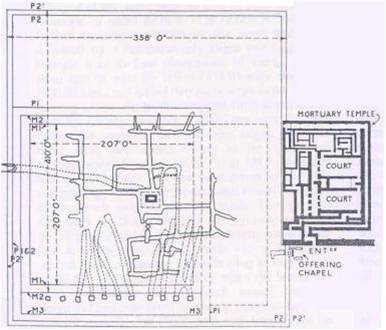
The original structure was an underground burial chamber. This chamber was rare in that it was square; most mastabas were rectangular. The royal tomb is 28m underground with a vertical shaft leading to it. The entrance was sealed with a 3 ton piece of granite. The face of the mastaba was a fine Tura limestone. Apparently it was intended for this to be the finishing touches to the building. It was then enlarged all around with ten feet of additional limestone and then again with an extension on the eastern side. The extension was twenty-five feet of limestone to make the mastaba rectangular. Again, it was enlarged and a two-tiered structure was made. A series of corridors and a tomb chamber was dug.

Some of the chambers are lined with blue tiles. After the third stage was finished, the process to make it a true step pyramid was begun. Over 200,000 tons of stone was used to make the additional two tiers that went above the existing two-tiered structure. An additional two tiers were added above the existing four to make it into the six-tiered pyramid which is there today. A Tura limestone face was added on.

On the northern side of the pyramid, a few blocks of the casing remain. The casing blocks from the Great Pyramid rested on the individual blocks of the core masonry. The casing blocks on the step pyramid were set at an angle to take up the thrust of the successive layers.
The Mortuary Temple is just north of the pyramid. The Southern Tomb is located just outside of the southern wall. Steps lead up the wall to the other tombs and monuments outside the walls. On the left side of the stairs, there is a large hole. At the bottom of the hole, is an entrance that leads to an amazing set of chambers. These chambers are also lined with the blue tiles that are found in the burial chambers in the Step Pyramid. The inscriptions found in these chambers are remarkable. They are perfectly executed and pure in line.
The Great Pyramid of Cheops, near Cairo
It is the largest and the oldest of the Pyramids of Giza. It would have taken over 2,300,000 blocks of stone with an average weight of 2.5 tons each. The total weight would have been 6,000,000 tons and a height of 482 feet (140m). ��How the Great Pyramid was built is a question that may never be answered!!!
The top platform is 10m square. The base of the pyramid is 754 feet and covers 13 acres. The original entrance to the pyramid was about 15m higher than the entrance that is used today. Apparently Al Mamum, who opened up the new passage, could not find the original opening. The new passageway leads straight across and joins in with the original passage, the descending passage. The descending passage led only to a subterranean chamber. This descending passage that leads down is set at a 26 degree angle that descends down 345 feet (105m) into the earth under the pyramid. The passageway is only 3’6″ (1.1m) wide and 3’11” (1.2m) high. The chamber itself is room that measures about 46′ x 27’1″ x 11’6″ (14 x 8.3 x 3.5m). There is a passage that leads 100 feet horizontally to the western side. The purpose of the pit is uncertain. It is possible that it could have been the burial chamber, but after a change of plan, it was abandoned.

The descending passage beyond where the new entrance meets it, is closed off by a steel door. The ascending passage rises at the same angle as the descending, 26 degrees. The ascending passage leads up into the pyramid. The ascending passage is the same dimensions as the descending, 3’6″ (1.1m) wide and 3’11” (1.2m) high. The passage leads on for 129 feet (39m). ��
�If you continue on horizontally, this passageway leads into the Queen’s Chamber. The Queen’s Chamber was never used. The second, and more spectacular, way at the leveling off point of the ascending passage, is to continue upwards to the Grand Gallery. The gallery is 157 feet (48m) long and 28 feet (8.5m) high and is at the same 26 degree angle as the passages. The roof of the gallery is corbelled. It is said that not a piece of paper or a needle can be inserted between the stones making up the roof. The gallery is only 62 inches (1.6m) wide at the bottom and is only 41 inches (1m) wide at the top of the incline.
The Grand Gallery leads into the King’s Chamber. The walls of the chamber are made of pink Aswan granite. Inside this chamber is the very large sarcophagus made of Aswan red granite, with no lid. The sarcophagus must have been placed inside the chamber as the pyramid was being built. It is much too large to have been moved in afterwards, as was the usual custom of that time. The King’s Chamber is 34’4″ x 17’2″ x 19’1″ high (5.2m x 10.8m x 5.8m high). This chamber also has the possible ventilation shafts as the Queen’s Chamber. They are at the same angle as the shafts in the Queen’s Chamber. Above this chamber is a series of five relieving chambers which are essential to support the weight of the stones above and to distribute the weight away from the burial chamber. The top chamber has a pointed roof made of limestone blocks. This is the most important of the relieving chambers. In these chambers, are found the only inscriptions in the whole pyramid. ��
The original enclosure wall which is on the north and east side lies about 10m from the base of the pyramid. Little remains of Cheops’ Mortuary Temple. Three small pyramids stand to the east of Cheops’ pyramid. These are thought to have been for his sister, Merites, who was also his wife, and possibly two other queens. To the west of the great pyramid is the Royal Cemetery. It contains 15 mastabas. At the base of the south face of the Great Pyramid, sits the Boat Pits and Museum. The boat, which is encased in the stones, has no nails. It was held together with ropes and pegs, but not nails, and is amazingly intact. The purpose of these boats may have been intended for travel to the after-life or to accompany the Sun-God on his journey.
Temples were of two main classes; the mortuary temples, for ministrations to deified Pharaohs; and the cult temples, for the popular worship of the ancient and mysterious gods. The mortuary temples developed from the offering chapels of the royal mastabas and pyramids, assuming early permanence and ever greater importance. In the Middle Kingdom when royal burials began to be made in the hillside, they became architecturally the more important of the two elements; and in the New Kingdom they stood quite detached from the then-customary corridor tombs. Thereafter, their special character tended increasingly to merge into that of the cult temples, and distinction between the two types was eventually lost.
Cult temples began in the worship of the multifarious local deities. The original essentials were a rectangular palisaded court, entered from a narrow end flanked by pennon-poles and having certainly within then an emblem of the deity. Inside the further end of the court was a pavilion, comprising vestibule and sanctuary. Owing to successive rebuilding upon these ancient sites, the stages of development are difficult to trace. Apparently, little but the sanctuary and attendant apartments was being built in stone at the opening of the Eighteenth Dynasty, but somewhat later in the New Kingdom, the influx of wealth universal spread of favoured cults brought the cult temples into full flower.
By this time, mortuary and cult temples had most features in common, yet still bore a resemblance of arrangement to the most venerable shrines. Along a main axis, not specifically oriented, there was a walled open court with colonnades around, leading to a covered structure, comprising a transverse columned vestibule or ‘hypostyle hall’ and a sanctuary beyond (or more than one if the temple had a multiple dedication) attended by chapels and other rooms needed by the priesthood. An impressive axial gateway to the court was traditional; it now was now extended across the whole width of the court to form a towering, sloping-sided pair of pylons, with tall portal between, equipped with pennon-masts, gorge cornice and roll-moulded outer angles.
Ancient Egyptian Temple Elements
Ancient Egyptian temples, particularly in their fully developed state, became complex structures with many different architectural elements. The essential parts of the temple proper can be viewed as increasingly sacred zones. Usually consisting of an approach and entrance together with the outer areas of the temple enclosure, which was open to the general Egyptian population, its outer courts within the pylons that were accessible to temple priests and occasionally, some of the general population, its inner halls where only purified priests were allowed, and the inner sanctuary, restricted to the king and priests of a very high rank.
Part I: Approach and Entrance
Many people who visit ancient Egyptian temples will simply think of the massive pylon gateways as the temple entrance. Yet this is not really the case, and in fact the pylons were usually located well within the structure. The actual elements of the temples entrance usually included the landing quays, kiosks, gates and processional ways that preceded the temple’s outer enclosure walls, which finally led to the pylon gateways themselves.
Most temples were located either near this sacred river, or a canal that communicated with the Nile. Thus, a landing quay often represented the initial encounter with a temple. Landing quays were often built on canals cut back from the Nile both to allow for a more stable waterway free from the river current, as well as to locate the quay closer to the temple proper. The landing quays were also the initial point of greeting during the ceremonial journeys made by the cult statues of the gods.
Causeways and the Path to the Temple Proper
A path leading from the landing quay to the temple proper was at least marked, often paved, and in the case of Old Kingdom mortuary temples, roofed. While statues of gods or the king might be found along the paths during earlier times, after the Second Intermediate Period the most common sculptures were those of Sphinxes. These protective sphinxes could have a human head, filling the role of king as guardian of the temple approach. Others might fuse the body of a lion with any number of different images for the head, depending on the nature of the god associated with a particular temple. As a notation, the processional path leading to a temple entrance did not always lead from a landing quay, though the main entrances to the temple enclosure almost always involved a processional way. Sometimes, such processional ways leading to the enclosure walls ran between temples as is the case in the Karnak and Luxor Temples
These structures seem to have been built as a resting area for the ceremonial processions, as well as to refresh the image of the deities that were transported along the causeways or processional avenues. They were usually fairly simple structures, with little or no decoration, and only large enough to house a low altar like base and the god’s portable barque that was placed atop this base.

The causeway or processional path leading from the landing quay eventually entered the temple proper marked by its surrounding enclosure wall, called sebty during Egypt’s New Kingdom, when they were most common. There was the obvious intent to protect the temple complex from outright attack, either during times of civil strife or foreign invasion. Of course, the wall also marked the boundaries of the god’s estate, sealing it from the countryside and the surrounding inhabitants.
However, more subtly, the enclosure wall blocked out, both symbolically and physically, the confusion and disorder of the outside world, creating an atmosphere conducive the temple’s sacred role.
Enclosure walls were almost always built out of mud brick, though in large temples, they were sometimes laid over a framework of wooden beams and reed mats. The walls were certainly not simply ornamental, for many were as thick as 10 meters (30 feet). Some even had rounded battlements and occasionally, bastions or fortified gateways. Usually, and also for defensive purposes, the number of entrances in the enclosure wall was kept to a minimum.
Obelisks were one of Egypt’s most ancient symbolic structures that perhaps evolved out of an irregular shaped upright sacred stone. Often, these were placed in front of the pylons but at times they were also placed on the central axis of the complex. However, they usually lay outside of the main temple structure, being enclosed only as the precincts grew around them.
Obelisks, if one reflects their form, were unusual constructs that have fathomed the test of time. In there mature state, they usually consisted of stone, sometimes weighing hundreds of tons, in an elongated, tapering four sided shaft that was then polished, inscribed and surmounted by a sharply pointed pyramidion. They represent some of the ancient Egyptian’s greatest achievements in stone cutting and handling.
However, we still to this day do not exactly know the manner in which Obelisks were erected, and it is possible that different methods evolved over time, or were used preferred depending on the location. After erection, many obelisks stood higher than the temple itself, and with their bright, gilded points, were the first and last elements of the temple to catch the suns rays as it rose in the morning and set in the evening.
Proposed way of how the Obelisks were raised
Various theories of how they were erected have been proposed. They generally include an earthen ramp up which the obelisk would have been dragged base first, lowered slowly onto the foundation plate and then pulled upright.
Often larger in at least volume than even obelisks were the Colossal statues, usually of kings, cut out of monolithic blocks of limestone, sandstone, quartzite or granite. We find such statuary, usually erected along the temple approaches or major processional ways, as well as in front of the temple entrance, from as early as the Old Kingdom.
The artistry of this style of monumental statuary is truly impressive. Most of the time, the colossi were carved from a single block of stone with the feet remaining attached to the base. No less daunting was the transportation and erection of these massive statues, which was probably accomplished in a similar manner to obelisks.
They were one of the most distinctive architectural elements within the temple complex. Thus, while they acted as the entrance gateway to the temple proper, they were very often enclosed within the temple itself, as successive rulers extended temple complexes.
As the rulers added pylons to the temple complexes, particularly later in Egypt’s history, they often tore down existing structures that they felt were no longer useful and stood in their way, and used this rubble to fill the interior of their new pylons.
Like the enclosure walls, pylons served both a defensive and religiously symbolic function. They provided a physically defensive position in times of real chaos or attack, but they also, like the enclosure wall, provided a symbolic barrier to the chaos and evil beyond the temple grounds.
Regardless, the pylon represents the end of the beginning, for through this monumental gateway stood the courts of the temple proper.
Part II: The Outer Courtyards
There was usually a courtyard after the massive pylon gateway. In fact, in some huge complexes there could end up being pylon followed by courtyard in repetitions. In a practical sense, the outer courtyard had a transitional purpose, serving as an interface between the outside world and the sanctified regions deeper within the temple.
It was usually of the same width as the following hypostyle hall and took on a rectangular plan. It was almost always an open peristyle court that would be partially surrounded on its sides by a colonnade that was covered by an ambulatory. The courtyards were almost always paved. Within the court was often located a great altar for the offerings, usually on one side of the central axis. In the earliest temples the portico, sitting upon a raised platform, seems to have stretched only in front of the rear wall of the court and was reached by way of a ramp.
Part III: On the Path to the Sanctuary
The open courtyard was the last area of the temple generally available to at least some of the common population. Beyond lay regions that were only accessible by purified priests, and deeper still to only high priests or the king.
If there is a modern, recognizable icon of the ancient Egyptian temple, it would almost certainly be the chamber (or chambers) directly beyond the open courtyard known as the hypostyle hall. The first area of the inner temple where the general public was never allowed, it was usually transverse to the courtyard, being broader than it was deep, and filled with sometimes over one hundred massive columns. In some instance, especially with regards to the larger prominent temples, there might be a repetition of these chambers which acted as a transition into the most sacred areas of the temple. In the Nineteenth Dynasty, there might be as many as three secondary hypostyle halls added beyond the first great hall, with different names that reflected the types of rituals ceremonies performed in each. It is an element of the fully evolved temple, though we may recognize an archaic form of this hall in the fore temple of the Old Kingdom mortuary complexes.
The hypostyle hall had both practical and symbolic functions. It did allow a solemn and rather awesome transition leading to the inner sanctuaries. The large number of columns was needed in order to support the sandstone architraves and roofing slabs of these massive chambers. But the columns of these halls also had considerably symbolic meaning, though caution must be applied here because the ancient Egyptian religion had a complex theology that we will probably never completely understand.
It should be noted that there was a striking similarity between what Vituvius called the “Egyptian Hall” (hypostyle hall) and the Roman basilica.
They were thresholds that acted as liminal points necessary in the enactment of ritual processions. The doors themselves were usually made of wood, but often covered in metal and it is possible that some smaller door leaves (awy) may have been cast entirely of metal. However, wooden doors were usually covered in copper, but in some cased might be plated in bronze, electrum or gold. They were mounted on wooden pivots set into sockets in the threshold and lintel of the doorway (seba).
These doorways, along with providing protection, also acted as symbolic gateways that were thresholds of other worlds or states of being.
Storerooms, Crypts and Other Chambers
About the principle shrine of a temple they built chambers, and even suites of chambers, for visiting gods and their attending priests. In addition, there could be storerooms for cultic equipment such as clothing for the god’s image, incense, vesting chambers where the priests could prepare themselves for these special ceremonies, and other rooms associated with the daily rituals performed in almost every temple to wash, cloth and feed the gods.
There were also hidden crypts and small, mysterious chambers are large niches built into the walls or beneath the floors.
Access to the temple roof was needed both to maintain the temple, and for religious purposes. However, the roof was also incorporated with a number of rituals, which, depending on the god (such as solar deities), could be very important. It is actually the stairways that provide most documentation of these rituals, for the processions of priests and gods are often depicted on their walls. At times, the god might be transported from a below ground niche up through the temple and to the roof, a ritual that embraced the god’s activities in the underworld, on earth and in the heavens .
Part IV: The Sanctuary and its Environs
Beyond the hypostyle hall in smaller temples we might find the sanctuary, but in many instances there could be several other chambers or halls.
Offering Halls and their Altars
One of the rooms preceding the sanctuary was typically dedicated as an offering hall which included one or more altars. These altars could take any number of different shapes and sizes, but were often square blocks carved and decorated on their sides, or flat slaps surmounting cylindrical bases. However, some altars could be table-like or taller, flat topped and we also find examples of altars with raised corners that may have originated in Syria. The larger altars could be very significant structures with steps leading to their roofs.
Just prior to the sanctuary there might also be located a barque chapel, which was a room that housed the portable barque on which the statue of the god rested during processional ceremonies and other occasions on which it was moved. The barque is a form of boat, though in the case of portable barques it was more of a symbolic concept, for these did not usually take on the shape of an actual boat. Rather, it was designed to be carried on the shoulders of the priests and would be loaded on a real boat if transported by water.
The inner sanctuary was the most holy part of the temple complex. Structurally, the sanctuary was often a deep and narrow room., usually incorporated into the very rear of the temple. The sanctuary of the principle deity honored within the temple almost always stood on the temple’s main axis. Offset to the main sanctuary there might also be additional sanctuaries build for associate deities, sometimes in symbolically oriented alignment, or shrines to these other deities might be positioned in the single central sanctuary.
Within the sanctuary, the god’s statue would usually be housed within some form of shrine. The shrine might be constructed of find hard stone with bronze or gold plated wooden doors, or in smaller temples, completely made of gilded wood. The most common form, known as a “naos” shrine, was completely closed on all sides with a double door that was oriented towards the temple entrance.
An element within the sanctuary dating back to the Old Kingdom mortuary temples in pyramid complexes was a decoration we refer to as a false door. To the ancient Egyptians, there was nothing false about this door, for it allowed access to the sanctuary by the gods (specifically the deceased king in the case of mortuary temples) or access to the outside world by the gods in the case of non-mortuary temples. It was usually located in the very back of the sanctuary, and in the case of non-mortuary temples, might be associated with a chapel of the “hearing ear”.
The Chapel of the “hearing ear”
While the last room in the back of many temples was the sanctuary, in others there was located directly behind the sanctuary a chapel of the “hearing ear”. This was a very interesting development of the temple complex, acting as a back door to the complex which allowed those who were not purified, the common people, indirect access to the inner sanctuary and thus to the temple deity. It was actually situated within the outer walls of the temple, and might consist of only a niche, or at times, could be surprisingly elaborate. This chapel could house a complete statue of the god, or at other times, simply a carved pair of the god’s ears to which the people could address their prayers. In may cases, a small chamber might be built into the back of the chapel. Called “priest holes”, a priest might sit within this chamber where he could hear the prayers of the people and perhaps, at times, deliver oracles on behalf of the god.
Part V: Associated Element
A temple complex was virtually never constructed in isolation, for most at least needed an estate in order to survive at all. In fact, the temple itself was almost always surrounded by other support facilities, or facilities needing support from the temple. Some of the structures were directly related to religious functions of the temple, while others were more administrative in nature. Unfortunately, many such structures, such as the Sanatoria, the House of Life, storage and support facilities, were built of mud brick and are therefore significantly deteriorated.
The mammisi, which is often referred to as a birth house and considered by some to be a temple in its own rite, was certainly a structure with considerable religious significance, especially for the king.
These lakes were rectangular in shape with straight, or sometimes with sides that were slightly curved inward. However, other forms of sacred lakes existed as well, such as the horseshoe shaped pool (known as an isherw-water) that enclosed the main buildings. These lakes were usually cut deep enough to take advantage of the underlying ground water and then lined with stone. On the side of the lake facing the actual temple complex, a stairway was included in order to reach the level of the water, which could vary at different times of the year.
A sanatoria was basically the very ancient equivalent of a medical (or magical) clinic (with hospital attributes), where the sick or injured could come to seek healing from the gods and perhaps, the wisdom of the priests and scholars of the temple.
Example of Temples
Great Temple of Amun, Karnak
The grandest of all Egyptian temples, was not built upon one complete plan, but owes its size, disposition and magnificence to the work of many kings. Originally it consisted of a modest shrine constructed early in the Middle Kingdom, about 2000BC; the first considerable enlargement was made in around 1530BC. It occupies a site of 366m x 110m, and is placed in an immense enclosure along with other temples and a sacred lake, surrounded by a girdle wall 6.1m to 9m thick, while it was connected by an avenue of sphinxes with the temple at Luxor.


The temple had six pairs of Pylons, added by successive rulers, and consists of various courts and halls leading to the sanctuary, and a large ceremonial hall in the rear. A great court 103m x 84m deep, gives entrance to the vast hypostyle hall, some 103 x 52m internally. The roof of enormous slabs of stone is supported by 134 columns in sixteen rows; the central avenues are about 24m in height and have columns 21m high and 3.6m in diameter, with capital of the papyrus-flower or bell type, while, in order to admit light through the clerestory, the side avenues are lower, with columns 13m high and 2.7m in diameter with papyrus-bud capitals.
A cult temple, may be taken as the usual type, characterized by entrance pylons, court, hypostyle hall, sanctuary, and various chapels, all enclosed by a high girdle wall. The entrance pylons, fronted by obelisks, were approached through an imposing avenue of sphinxes.
The portal gave on the open court, surrounded on three sides by a double colonnade and leading to the hypostyle hall, to which light was admitted by a clerestory, formed by the increased height of the columns of the central aisle. Beyond was the sanctuary, with opening front and rear and a circulating passage around, and beyond this again was a four columned wall. The smaller rooms flanking the sanctuary and its rear were mostly chapels or served for purposes of the ritual. The temple was protected by a great wall of the same height as the halls themselves, and like them the wall decreased in height towards the sanctuary end.
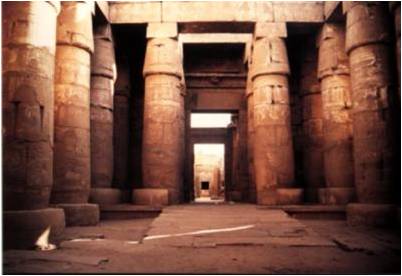
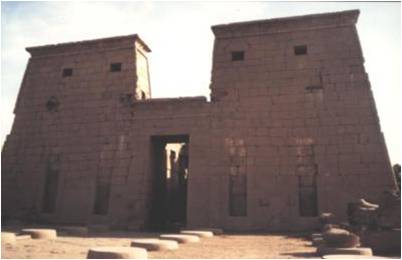
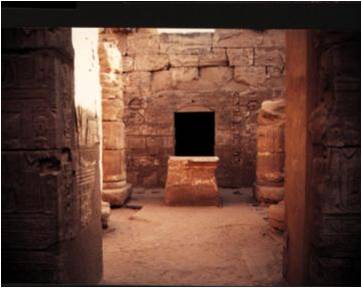

Its one of the two rock-hewn temples and quite the most stupendous and impressive of its class. An entrance forecourt leads to the imposing façade, 36m wide and 32m high, formed as a pylon, immediately in front of which are four rock-cut seated colossal statues of Rameses, over 20m high. The hall beyond, has eight Osiris pillars and vividly coloured wall reliefs. Eight smaller chambers open off asymmetrically to right and left, while on the main axis is a smaller hall with four pillars, leading to a vestibule serving three apartments, the central one being the sanctuary and containing four statues of gods and support for a sacred boat. The temple has been moved from its original site on the Nile to a higher level.

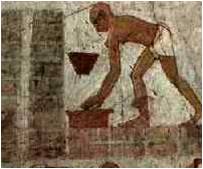
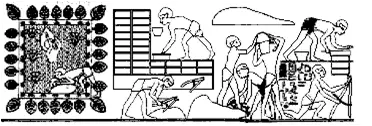
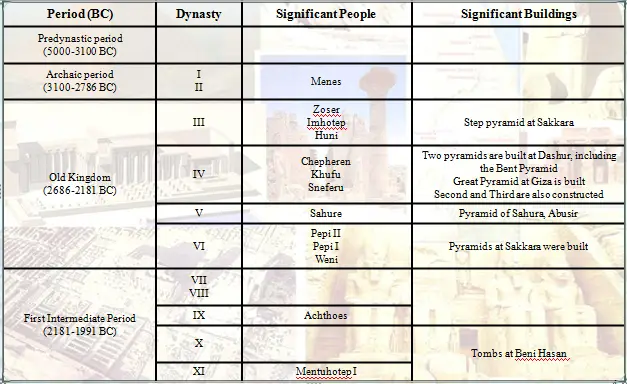
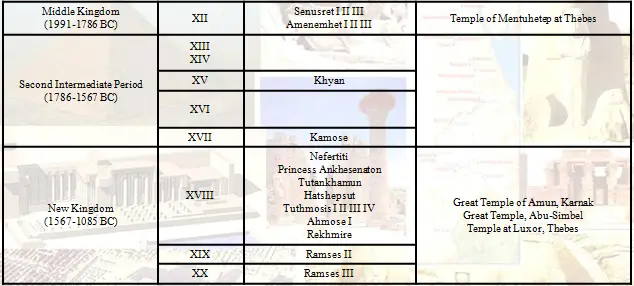
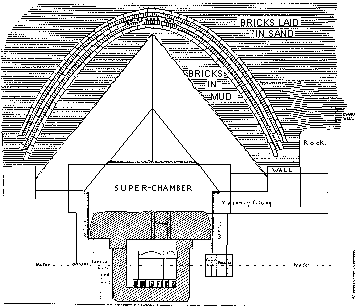
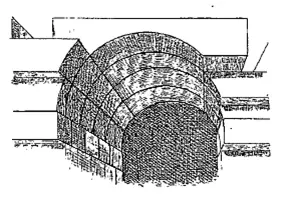
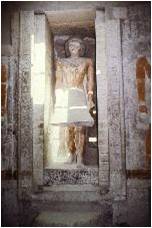
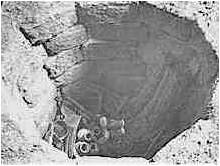

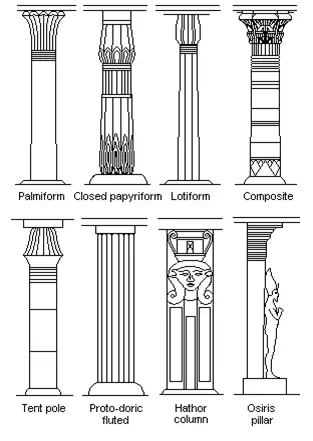
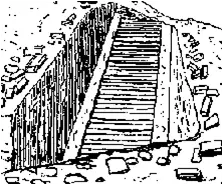
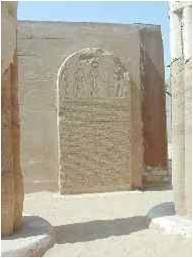




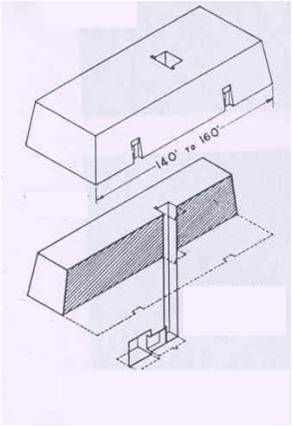
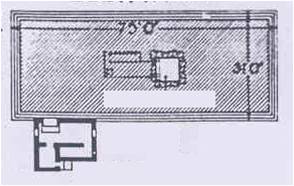
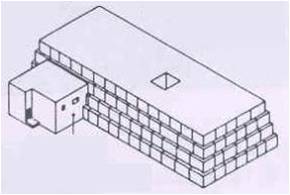


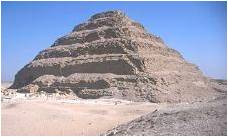
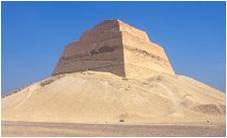
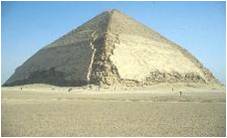
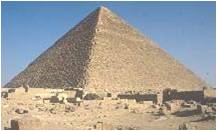
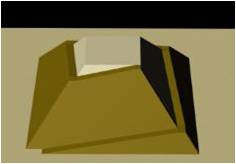
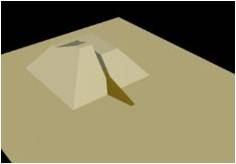
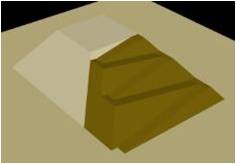
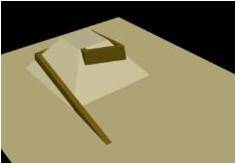
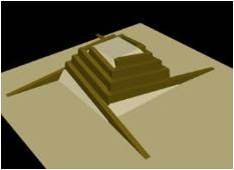
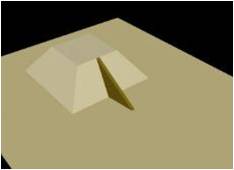
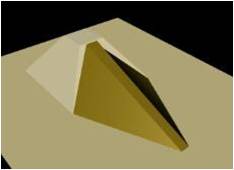
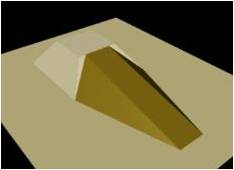
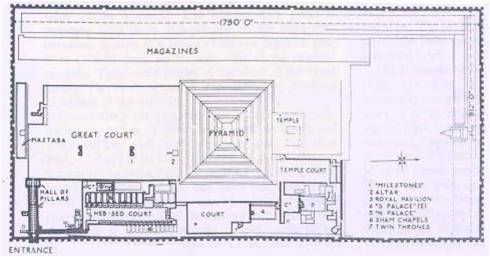
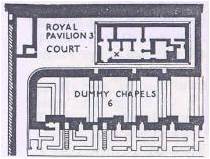



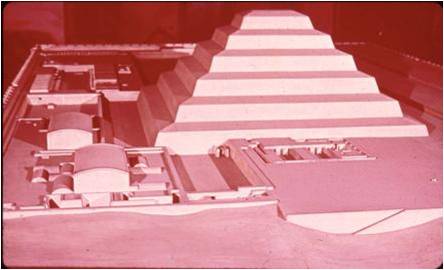







































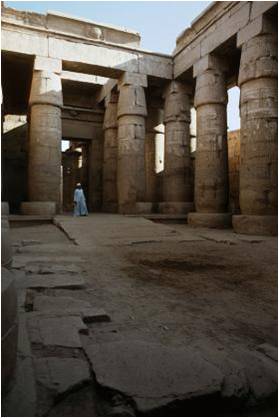
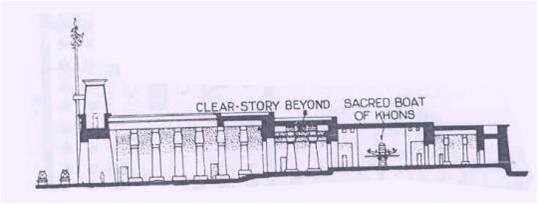
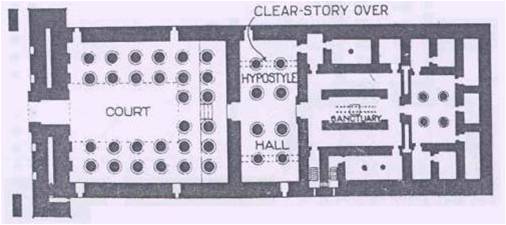
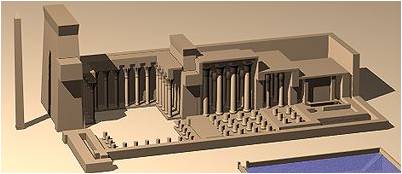
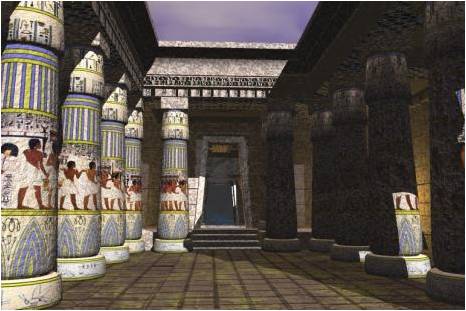




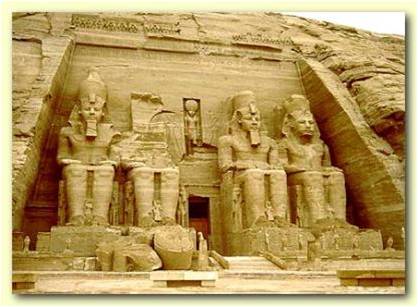
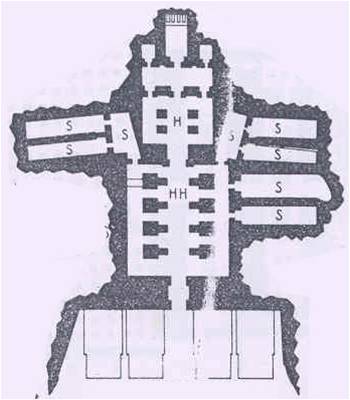

Leave a Reply
You must be logged in to post a comment.